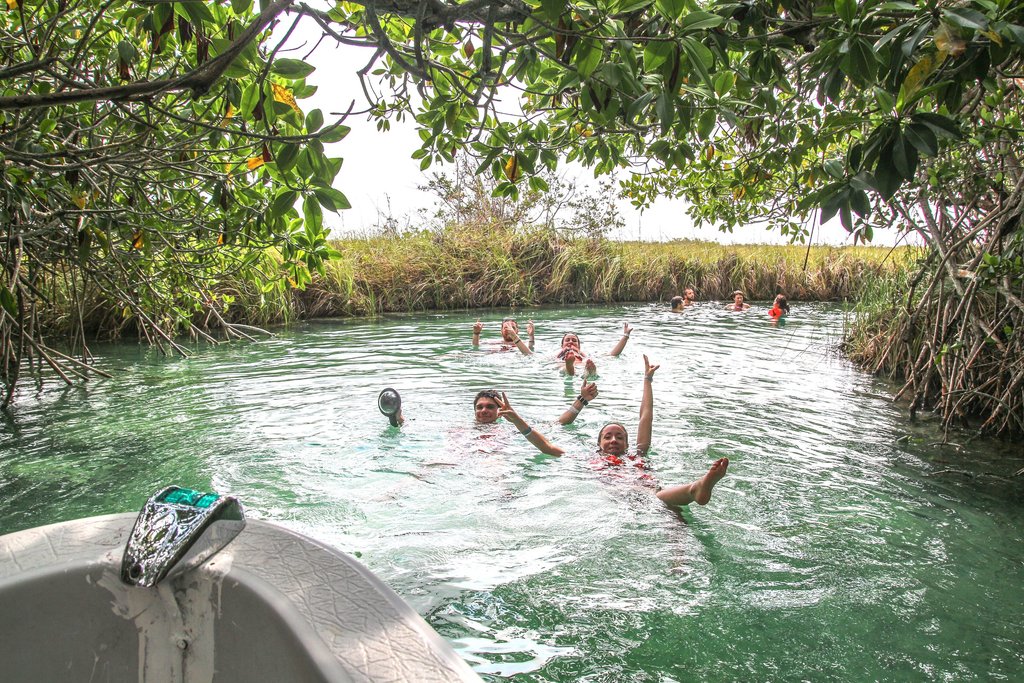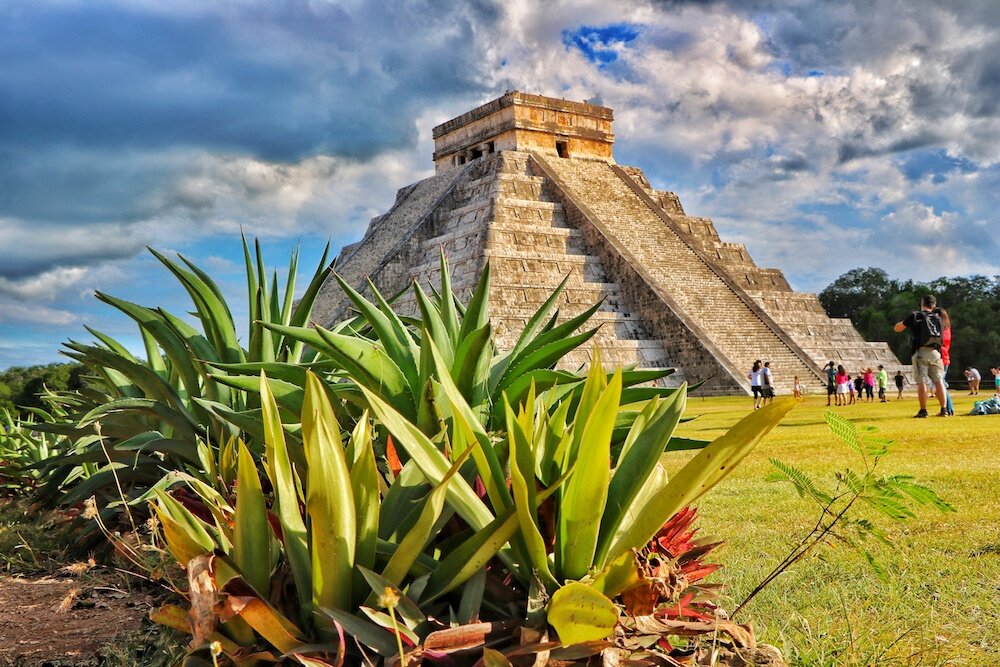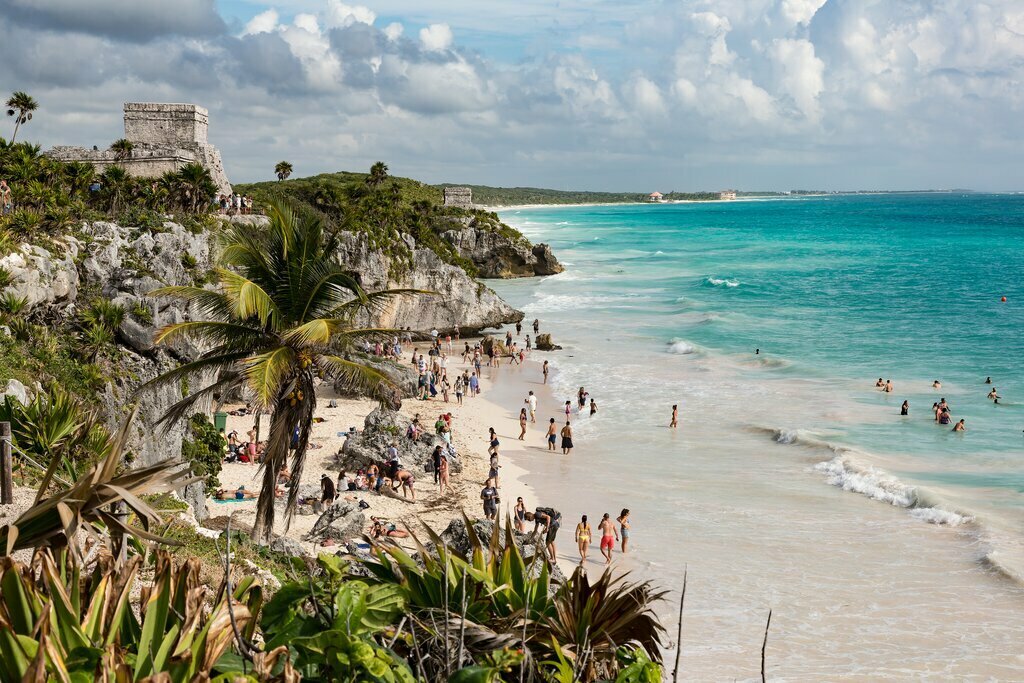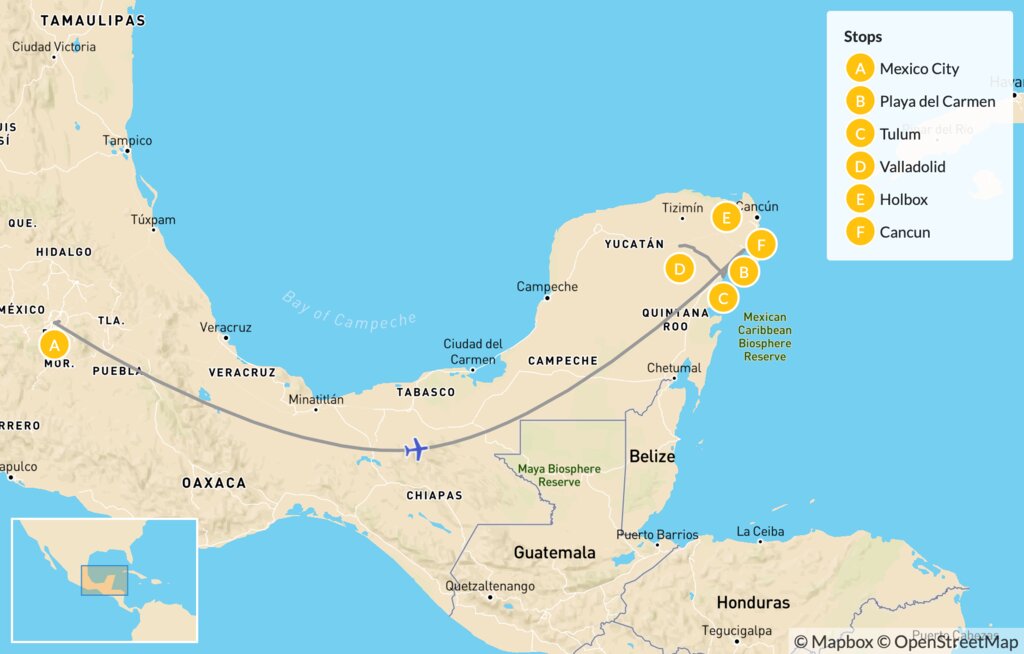Highlights
- Enjoy a culture and foodie tour of Mexico City
- See the grand pyramids of Teotihuacán on a bicycle
- Tour the Maya ruins at Tulum, on the Caribbean coast
- Visit the most historic sites in the Yucatán, like Chichén Itzá
- Spend a couple of days relaxing on the iHolbox Island
Brief Itinerary
| Day | Highlights | Overnight |
|---|---|---|
| Day 1 | Arrive in Mexico City | Mexico City |
| Day 2 | History & Gastronomy Tour, Visit the Museum of Anthropology | Mexico City |
| Day 3 | Coyoacán & Frida Kahlo Museum, Boat Tour of Xochimilco | Mexico City |
| Day 4 | Bike Tour of Teotihuacán | Mexico City |
| Day 5 | Mexico City to Playa del Carmen, Optional Activities | Playa del Carmen |
| Day 6 | Playa del Carmen to Tulum, Visit Chemuyil Cenotes | Tulum |
| Day 7 | Day Trip to the Sian Ka'an Biosphere Reserve | Tulum |
| Day 8 | Tulum Archeological Site, Free Day in Tulum | Tulum |
| Day 9 | Tulum to Valladolid, Bike Tour of Cobá, Maya Culture, & Nature Reserve | Valladolid |
| Day 10 | Tour Chichén Itzá, Cultural Experience in Yalcobá | Valladolid |
| Day 11 | Valladolid to Holbox, Optional Activities | Holbox |
| Day 12 | Mangrove Kayak Tour | Holbox |
| Day 13 | Holbox to Cancún, Depart |
Detailed Itinerary
Day 1: Arrive in Mexico City

Day 2: History & Gastronomy Tour, Visit the Museum of Anthropology

In the morning, head out on a guided 4-hour tour of the Centro Histórico, an area so historical it's earned UNESCO World Heritage status. You'll visit the Palacio de Bellas Artes (a white-marble concert hall built in 1905), the pedestrian-only Madero Street, and the Plaza de la Constitución, better known as Zócalo. This massive public square is home to landmark buildings like the Metropolitan Cathedral (built over 250 years beginning in 1573), the 16th-century National Palace, and the ruins of the 14th-century Templo Mayor, once a significant temple of the Aztec Empire.
Throughout the tour, you'll make various stops to partake of the local street food. Sample traditional favorites like the famous tacos al pastor and quesadillas with melted cheese and huitlacoche, also known as Mexican truffle. If you have room, enjoy a dessert of fresh hot churros dusted with sugar and cinnamon. And that's just the beginning—you'll quickly realize that in this former Aztec capital, there's an incredible variety of delectable tidbits, and in every bite is a taste of Mexico City's history and culture.
After the walking tour, you'll visit the Museum of Anthropology, one of the most important museums in Latin America. Its 23 rooms and outdoor exhibit spaces are home to the world's largest collection of ancient Mexican art. There are many pre-Columbian sculptures and ethnographic exhibits about modern-day indigenous groups. Highlight items include the Aztec Calendar, The Olmec colossal head (a giant stone head carved out of basalt), and the jade Mask of the Zapotec Bat God.
Day 3: Coyoacán & Frida Kahlo Museum, Boat Tour of Xochimilco

Today you'll enjoy a half-day tour of the most historic cultural sites around Mexico City. First up is Coyoacán. Located in the city's south, this neighborhood is famous for its cobbled streets, shady plazas, and colorful homes. The area has retained its colonial charm, as it was its own municipality from the early 16th century through the 19th century. Here you'll visit the 16th-century San Juan Bautista Church, plus stop at a local craft fair. Then continue to La Casa Azul, the house where Frida Kahlo spent much of her life and is now a museum displaying works by Kahlo and Diego Rivera.
Next, travel further south to the outskirts of the city and Xochimilco. This UNESCO World Heritage Site has been settled since pre-colonial times. It's known for its tranquil canals—remnants of the rivers that once crossed Mexico's valley floor and were used by the Aztecs for transport. A popular activity you'll enjoy is traveling down the canals on a trajinera (painted, gondola-like boat). As you float down the half-natural, half-artificial channels, you'll nibble on antojitos (Mexican snacks) and learn about Mexican history as boats filled with mariachi musicians float past and serenade you.
Day 4: Bike Tour of Teotihuacán

Upon arrival, you'll hop on a bike and cycle around the archaeological site, first passing the many murals that decorate the structures and depict cultural and religious motifs and natural landscapes. Then travel down the Avenue of the Dead, Teotihuacán's main path that runs for a mile (2 km). You'll also visit the Pyramid of the Sun, the largest structure at 215 feet (66 m), and the Pyramid of the Moon, which towers 140 feet (43 m). Then stop at the Temple of Quetzalcoatl (Temple of the Feathered Serpent), which has bas-reliefs of the feathered serpent deity carved into its sides.
After the tour, you'll enjoy a pulque tasting. Known to the Aztecs as "the blood of the gods," this traditional Mexican spirit is made from fermented aguamiel (sap) of the maguey plant, a type of agave. You'll also visit a workshop specializing in the pre-Hispanic flavors of the Teotihuacán region, which makes products from local flora like the fruits of the nopal and xoconostle plants.
Day 5: Mexico City to Playa del Carmen, Optional Activities

Chat with a local specialist who can help organize your trip.
Day 6: Playa del Carmen to Tulum, Visit Chemuyil Cenotes

Day 7: Day Trip to the Sian Ka'an Biosphere Reserve

In the morning, head out on a 6-hour tour of nearby Sian Ka'an, a Biosphere Reserve and Unesco World Heritage Site. Mexico's largest protected area, it covers over 2,000 sq miles (5,180 sq km). The site has natural wonders like tropical forests, palm savannas, wetlands, mangroves, lagoons, and unspoiled coastline. The region's sheer beauty is represented in its name—in the Mayan language, Sian Ka'an means "origin of the sky." Today's activity is part of a community-based ecotourism cooperative focusing on conservation and a commitment to responsible tourism.
You'll arrive at a community center where you'll join your tour group and start the excursion. After hiking for a while on a jungle trail, you'll arrive at the temple ruins at Muyil, an ancient Maya site settled in 300 BCE. Continue hiking until you reach the edge of the turquoise Chunyaxche Lagoon, where you'll ride a boat through a mangrove channel and arrive at a small dock. Once there, you can take a refreshing dip in the water. The real joy here is floating slowly along the channels amid the peaceful surroundings and listening to the calls of howler monkeys and exotic birds in the trees.
After the swim, you'll head back to the community center, where you'll find a hearty meal. Then it will be time to return to your hotel in Tulum.
Day 8: Visit Tulum Ruins, Optional Activities

Day 9: Tulum to Valladolid, Bike Tour of Cobá, Maya Culture, & Nature Reserve

In the morning, you'll leave Tulum and head 1.5 hours northwest into the interior of the Yucatán and the colonial town of Valladolid, which has earned a Pueblos Mágicos (Magical Towns) distinction due to its historical importance and rich culture. On the way, stop in Cobá for a guided 3-mile (5-km) bike tour of its Maya archeological site. You'll get to cycle along ancient white pathways lined with the ruins of this former metropolis whose heyday was between 600-900 CE. The real highlight is hiking up the 120 stone steps of Nohoch Mul, which, at 137 feet (41 m), is the tallest pyramid in Yucatán.
After touring the Cobá ruins, you'll continue to a small village known for its underground caves, ecotourism projects, and organic farms. This Maya community has been little touched by tourism, and thus the residents have retained their customs and culture. Here you'll enjoy a traditional meal with a local family and then continue to Valladolid. On the way, there's one more stop at the Punta Laguna Nature Reserve. Here you'll take a boat ride across its main lagoon. This is a great opportunity to do some wildlife spotting—particularly the countless spider monkeys that populate the area.
Day 10: Tour Chichén Itzá, Cultural Experience in Yalcobá

After Chichén Itzá, spend the rest of the day on cultural immersion in the Maya community of Yalcobá, located just outside Valladolid. This 8-hour experience is full of adventure, beginning with a guided hike through the Maya forest and a tour of the milpa fields—an ancient agriculture system that intercrops corn, beans, and squash. After exploring caves and virgin cenotes, you'll return to town and visit a handicraft workshop to see how locals produce artisanal jewelry and weaved hammocks. Then participate in a gastronomic workshop to learn about traditional Maya cuisine.
Day 11: Valladolid to Holbox, Optional Activities

Day 12: Mangrove Kayak Tour

Day 13: Holbox to Cancún, Depart



